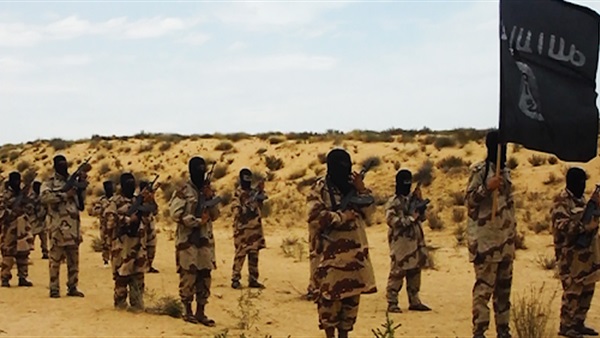Effectiveness of decision to include Egyptian Hasm and Sinai Province on terrorist lists

The United States has included the ISIS Sinai Province and Hasm movements in Egypt on the terrorism lists.
The decision, issued Thursday, January 13, also included two
leaders of the movement on the list of prohibited persons, Alaa Al-Samahi and
Yahya Musa, who fled to Turkey.
The question that arises now is what is the value of this
decision for Egypt at this time? What is its impact on the Brotherhood and
ISIS?
Hasm
The founding of the Hasm movement was due to the
repercussions of the dispersal of the Rabia al-Adawiya sit-in in eastern Cairo
on August 14, 2013, after which a number of armed entities affiliated with the
Brotherhood were formed.
These entities started with weak and inexperienced cells,
including the so-called Free Movement, Revolutionary Punishment, Dengue,
Molotov and Fancy movements, which adopted a number of operations in which
Molotov cocktails were used, including the burning of two police cars above a
bridge in Giza in February 2014.
Then the Hasm and Liwa al-Thawra movements were formed at a
later stage, with more organized mechanisms than others, after the supervision
of the group’s specific operations was assigned to Mohamed Kamal, whom the
Egyptian Ministry of Interior managed to liquidate in October 2016.
Scaled motion
Cairo has succeeded in curtailing the movement significantly
and has worked to paralyze its joints almost completely, as happened with other
entities that completely disappeared from the scene after drying out the
sources of their funding and even their presence on the ground, including the Helwan
Brigades, Soldiers of Egypt and Revolutionary Punishment, as a result of the
security pursuit.
Hasm does not present any security threat to the Egyptian
state now, as it completely disappeared from the scene since January 2019, only
appearing through the media re-promotion of its presence in August 2020 through
a video published by Yahya Moussa about the assassination of former Attorney
General Hisham Barakat five years after the incidenr, with the aim of deluding
the Brotherhood's financiers into the continued existence of the movement,
which is an extension of the Brotherhood's secret organization.
Iron fist
The recent decision by the US Treasury Department to include
the Hasm movement and the Sinai Province organization on the lists of “banned”
rather than terrorist groups does not constitute a thing of significance for
the Egyptian reality, given the success of the Egyptian security in besieging
the terrorist movements and its success also in drying up of their sources of
funding, which is evidenced by the reality and supported by the group's erratic
behavior.
A look at the movement’s activity during the previous years
reveals the extent of its extinction as a result of the great security vigilance
that does not allow it to move in Cairo or the governorates, even at its peak,
because the movement is completely hidden from view since August 2019. The last
operation during which it appeared two years earlier, except through the
emergence of individual operations similar to the operations of lone wolves,
which confirmed the weakness of the movement. This occurred in February 2019 in
the Ghouriya area behind Al-Azhar Mosque, through a suicide bombing.
Sinai Province
The terrorist organization began its activities in Sinai in
November 2013. It was first called Ansar Beit al-Maqdis, before declaring
allegiance to ISIS in 2014. It carried out a number of terrorist operations
against the Egyptian army forces, the most prominent of which was Operation
Karm al-Qawadis in October 2014.
The organization is active in the media, similar to ISIS, by
publishing pictures and producing videos showing the battles and attacks, the
latest of which was issued on January 10, 2021, which was a compilation of
previous footage carried out by the terrorist organization during past years.
There is nothing new about it.
Effectiveness of the decision
The decision of the US Treasury Department stipulated the
addition of Sinai Province and the Hasm movement to the terrorist lists of the
Office of Foreign Assets Control (OFAC).
Although many optimists say that the decision is the
beginning of declaring the Brotherhood among the terrorist lists in the United
States, the decision may not indicate anything new or benefit this optimism for
two reasons.
The first reason relates to timing, as the timing of the
decision came too late, after the Egyptian security vigil proved its control
over the situation, as it restricted the movements of the Brotherhood, whether
individually or collectively in Cairo and the governorates, and this restricted
the activity of Sinai Province to a very narrow range of not more than a few kilometers
at the far northeast part of Sinai.
The second reason is the formula, as the wording of the
decision came in a manner that bore the phrase “banning two Brotherhood
leaders”, which differs from adding to the lists of terrorism, and the two individuals
declared banned were sentenced to death in Egypt.
In addition, in 2018, the US State Department had previously
placed both the Hasm movement and the Revolutionary Brigade on the special list
of international terrorist organizations due to acts of violence targeting
civilians, both of whom operate in Egypt and are affiliated with the
Brotherhood.
Situation on the ground
Evidence that the decision does not concern the Egyptian
side much after the great successes achieved by the Egyptian administration,
especially in Sinai, was announced by Major General Mohamed Abdel Fadil
Shousha, Governor of North Sinai, on January 6, 2021, of Arish port receiving
the first commercial ship after it reopened, which means an early clear
announcement of the end of terrorism in North Sinai.





